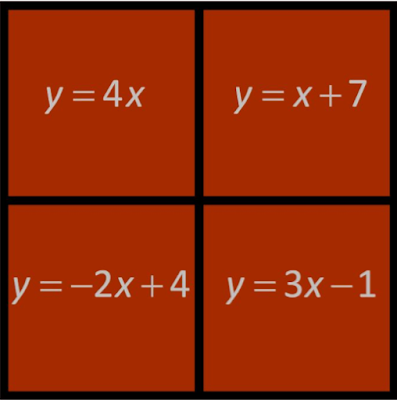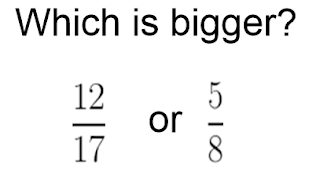Hoping to continue our work from yesterday on finding equations of lines we started with this pattern.(with students working in groups up at the board):
Most students are so good at these patterns. I really like their strategy of finding the y-intercept by seeing how much they are off by when the substitute a step number into their equation. I don't want them to lose that intuition but at some point the numbers will become challenging enough that it may be easier to use an equation. I had one group that really struggled with this question but eventually they sorted it out.
When they were done they moved onto the next bunch of questions.
The last question was full of fractions. Many groups seemed fine to keep working with fractions which made me happy. One of the groups kept wanting to change their fractions into decimals and proceed that way. They got a little upset at me for insisting their work be done using fractions (everybody's favourite F-word).
Once they were finished I told them to plot the points and equations for the last two questions in Desmos to see if they got the right answer. Many groups realized that they made a mistake since their line didn't go through the points. They traced back through their algebra to find their errors (often a wrong sign).
Once they were finished I sent groups back to their seats to work on his handout so that they could practice.
I really think that finding the equation of a line that passes through two points is probably the most difficult topic in the course. However, I believe that spiralling the course has really helped. My students have looked at finding equations from tables since the first week of school. We didn't call the parts of the equation the slope and the y-intercept at the beginning of the semester. We had an entire table rather than just two points. But, I really feel like my students have a good understanding of these parts of equations and are now able to hang the proper terminology on their understanding. Students who are still struggling with this concept will have an opportunity to revisit it was we move forward.


































